Brighter Tomorrow: Help the children of Babag, Philippines
In the mountains of Cebu, child sponsorship has the power to send children to school safely and encourage them to chase their dreams.
Sponsored children: 0 of 13
According to the World Bank, almost 43% of the urban population live in the slums. In Manila alone, an estimated 4 million people live in shantytowns dispersed among some 526 communities.
Slums are “a contiguous settlement where the inhabitants are characterized as having inadequate housing and basic services” as defined by UN-Habitat. The living conditions of shantytowns in the Philippines are shoddier than those of the poorest rural areas according to the World Bank.
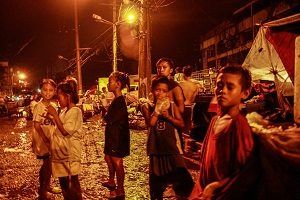 People live in makeshift houses hastily built from scrap and recycled material. Families eat, live and sleep crammed into single-room shelters. More often than not, these substandard habitations do not have proper water, electricity, or sanitation. Smell, deadly fumes, fires, dirt, crimes are banal. The slums are crowded. Manila is one of the most densely populated cities in the world, with 73,920 people per square kilometre; slums are even more jammed, with over 100,000 people per square kilometre.
People live in makeshift houses hastily built from scrap and recycled material. Families eat, live and sleep crammed into single-room shelters. More often than not, these substandard habitations do not have proper water, electricity, or sanitation. Smell, deadly fumes, fires, dirt, crimes are banal. The slums are crowded. Manila is one of the most densely populated cities in the world, with 73,920 people per square kilometre; slums are even more jammed, with over 100,000 people per square kilometre.
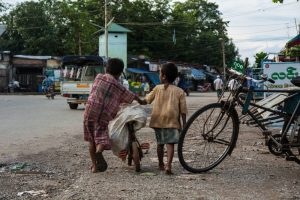
The localisation of the settlements is also a real source of hazard, and the lack of sanitary conditions poses a severe health risk to its inhabitants. The localisations are often hazardous and unsuitable for settlements. Usually situated near rivers, slums run along garbage, swamps, railroad, or industrial land. In Tondo, one of the largest slums located on the outskirts of Manila is a representative example of the level of insalubrity in such neighbourhoods. The river running through the area is a source of distraction for the youth, who like to bathe and play in it. Nonetheless, polluted by garbage and excrements thrown by slum dwellers who do not have toilets, the water is a real menace to the population’s health.
The country’s climate, its exposition and vulnerability to natural disasters, and its sensitivity to climate change also affect the slums disproportionately.
Naturally prone to typhoons and floods, the country is one of the highest-ranked states according to the World Risk Index assessing natural disaster risks. Manila, for instance, is lying a seismic fault line and its low-lying neighbourhoods can be flooded by a few millimetres of rain. Climate change is only increasing natural disasters’ occurrences and aggravating their strengths. Moreover, slums are often built on the worst land with unstable slopes or low-lying areas that are subject to flooding. The flimsy houses fail to adequately protect their inhabitants from the aggravated risks to which they are exposed by living in such areas. The settlements’ fragile constructions are destroyed during such catastrophic events. The impact on the population is devastating. When a natural disaster hits, the damages are not exclusively material but many dwellers are left without resources. Disasters disrupt their professional activities and they significantly affect their ability to pay for the most basic necessities. Lives are also lost.
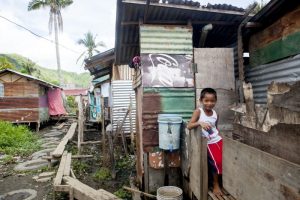
Each family has their personal story of what led them to the slum, but financial difficulties are often at the heart of each narrative. Historically, many have left their rural birthplace to move to an urban centre in the hope of ending their chronic poverty and finding a job. The movement from rural to metropolitan areas is not singular to the Philippines, but a number of interlinked factors are responsible for the high number of squatters in the country. The dynamism and modernization of the country’s economy did not increase work opportunities evenly throughout its entire territory; low-skill services jobs are often located in urban areas. People are thus moving attracted by employment opportunities.
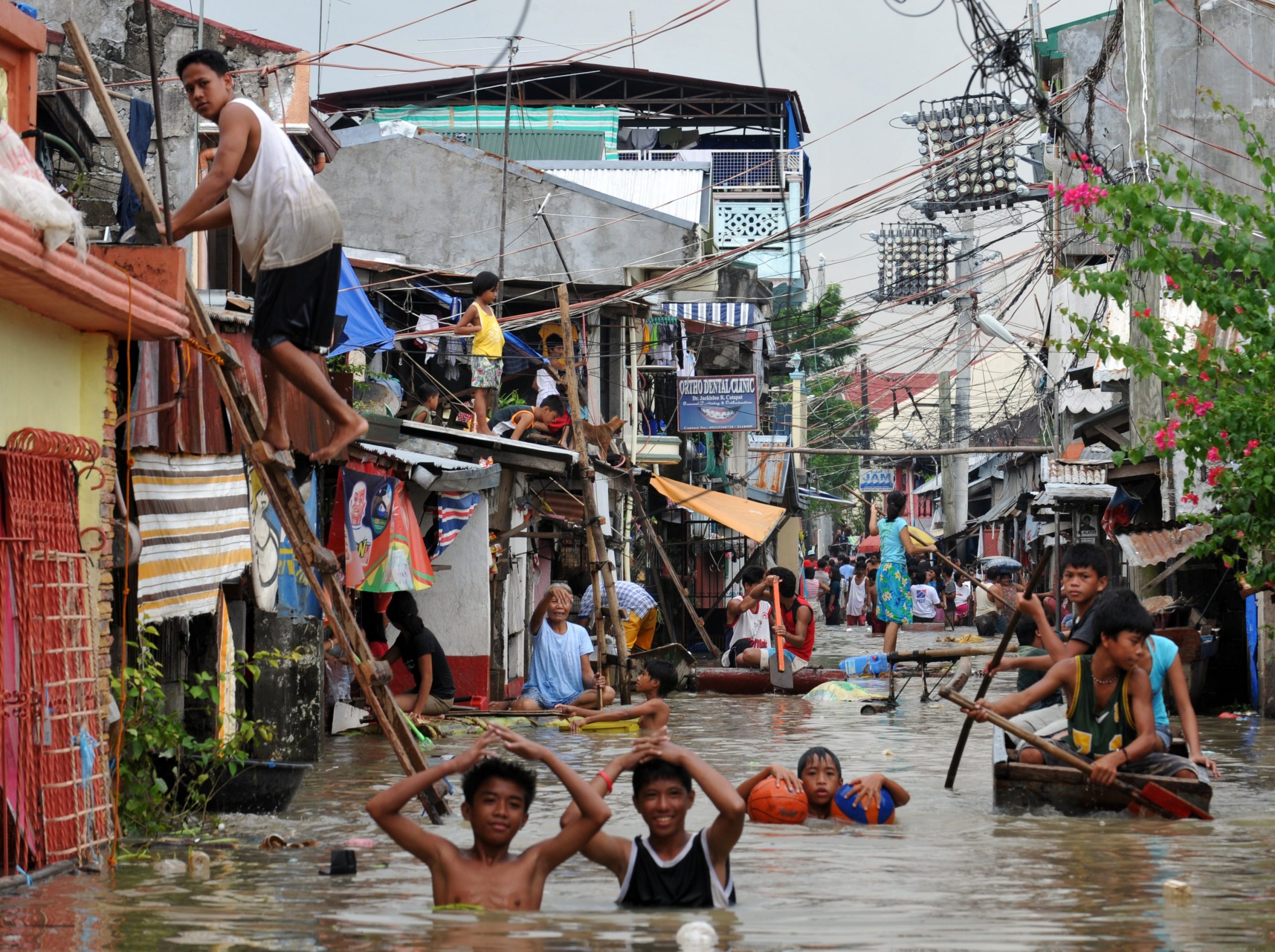
The capital’s population growth demonstrates the urbanization and mass movement of population toward cities; Manila is the fastest growing city globally. For comparison, Manila grows by 60 new people an hour, while London only sees 7 newcomers per hour. This incredible growth is coupled with the government’s inability to offer viable housing, thus leaving the poorer strata with no other solution but to live in makeshift accommodations.
The unemployment figures sum up the situation: most dwellers are not jobless but rather have occupations that do not permit them to offer families a conventional housing solution. Indeed, according to the World Bank, in 2016 urban unemployment rate was 6%, but 30% of wage workers made less than two-thirds of the country’s median wage. Conflicts and displacement have also historically pushed Filipinos to move to urban areas. Climate is yet another reason given by squatters arguing that typhoons and floods are more frequent in rural areas. Whatever the reason may be sparking their decision to move once they arrive in the city unable to afford a decent place to live, they join the shantytown, the only place where they can settle and put a roof, albeit a simple iron sheet, on their head.
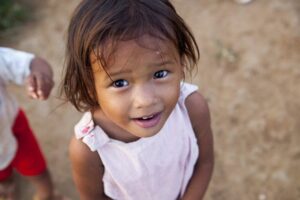 Children are numerous to live in the slums. UNICEF estimated that at least 1.7 million children live in the Metro Manila slums alone. Most children are housed with their families. Nevertheless, it is not uncommon to see street children homeless – they maintain limited to no contact with their families. Children in the slums not only have to deal with precarious living conditions; their vulnerability exposes them to particular adversities: forced labour, violence, drug abuse, gangs, trafficking, and exploitation are often part of their daily lives.
Children are numerous to live in the slums. UNICEF estimated that at least 1.7 million children live in the Metro Manila slums alone. Most children are housed with their families. Nevertheless, it is not uncommon to see street children homeless – they maintain limited to no contact with their families. Children in the slums not only have to deal with precarious living conditions; their vulnerability exposes them to particular adversities: forced labour, violence, drug abuse, gangs, trafficking, and exploitation are often part of their daily lives.
Learn more about our privacy policy here.

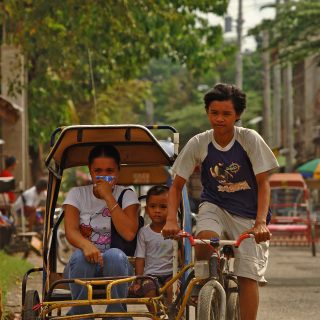 Many children engage in child labour to survive or help their families. Frequently, children work to supplement their meagre household incomes. On average, the poorest households have more than twice as many children as their wealthiest counterparts (5.2 versus 1.9 children per woman according to the National demographic and Health report carried out in 2008). The scarce family resources are insufficient to sustain all of its members, obliging many young ones to work. Street children, counting solely on themselves for their subsistence, are also forced to work. Child labour comes in various forms, from filling jeepneys (local buses) to hazardous work during which children are exposed to potentially harmful chemicals or tools. It also includes dangerous and illegal activities such as prostitution.
Many children engage in child labour to survive or help their families. Frequently, children work to supplement their meagre household incomes. On average, the poorest households have more than twice as many children as their wealthiest counterparts (5.2 versus 1.9 children per woman according to the National demographic and Health report carried out in 2008). The scarce family resources are insufficient to sustain all of its members, obliging many young ones to work. Street children, counting solely on themselves for their subsistence, are also forced to work. Child labour comes in various forms, from filling jeepneys (local buses) to hazardous work during which children are exposed to potentially harmful chemicals or tools. It also includes dangerous and illegal activities such as prostitution.
Children are subjected to trafficking and sex work. Unfortunately, the country is notorious for its child sex industry, and its children are victims of this sprawling criminal activity. Poverty is fuelling such exploitation, causing slum children to disproportionally become victims. Left to their own devices, street children are prime victims of traffickers preying on their vulnerability. Moreover, children whose parents seek to supplement their income are also involved against their will in such criminal activities. The UNICEF published a scathing report identifying the country as a “global epicentre of live-stream sexual abuse trade”. The agency illustrated the extent and gravity of the issue with the case of a mother who forced her own child to hold pedo-pornographic online “shows”. She was also offering hungry children food, shelter and 150 pesos (£2,03) in exchange for their involvement in her “shows.” Parents were also bringing their children.
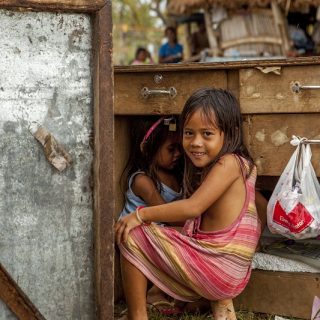
Children also suffer from malnutrition and lack of access to drinkable water. According to UNICEF, 28% of children are underweighted nationwide. Nevertheless, malnutrition is three times more likely for children in a shantytown. Lack of access to clean water is another compelling issue. The UNICEF estimates that only 80% of the poorest households have access to drinkable water, a small figure compared with 99% for the wealthiest.
The youth living in the slum are consequently particularly subject to health issues. According to the USAID report “Health of Children Living in Urban Slums in Asia and the Near East”, infant mortality in the capital slums is triple those of non-slum children. Forced to scavenge for food, children face serious health repercussions. A study of Smokey Mountain, a garbage dump in Manila, has shown that the overwhelming majority (80%) of young scavengers aged from 8 months old to 15 years old were infected by at least two intestinal parasites. They are also more likely to contract various diseases such as tuberculosis (nine times higher than among non-slum children), parasitic infections, dengue and half of them are anaemic.
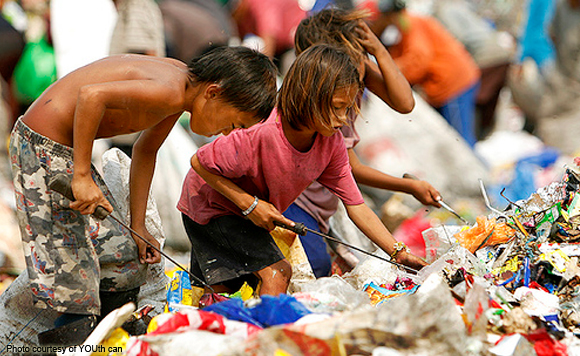
Education is neither a priority nor widely available to children in such precarious conditions. Due to the informal nature of slums, public and social services such as health or education are scarce. When lucky enough to be in school, many are forced to drop out and find work. Indeed, families’ income are simply insufficient to pay for an education. A UCL study showed that the bulk of the family’s small income is dedicated to food. With limited resources, after covering their basic needs, they have little money left for education, on average 12£ per month per family. Even when they are able to overcome the many barriers they face to receive an education, their living conditions are highly incompatible with a successful education. The UNICEF considers access to water and food as a sine qua non condition for proper concentration and success in school. Academics add that disadvantaged students are predisposed to more emotional and social disorders, which also affect their abilities to focus in class. Unsurprisingly, the education gap between the poor and wealthier populations is striking. More than 30% of the poor population’s highest level of education is limited to some elementary schools. Almost none will graduate college whereas almost 30% of the non-poor hold a college degree.
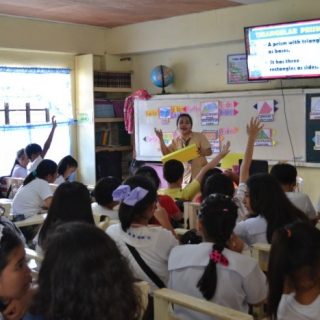
Sponsor a child today and offer them an opportunity to attend school, break the cycle of poverty and change their life.
Your help will not only enable a child growing up in the slums to study but also regain confidence in the future.
With a donation of £28 a month, you could sponsor the street children in Manila. With your help, street children will have access to a foster house, medical care, as well as social workers and educators.
Sponsoring street children is offering them a new start in life.

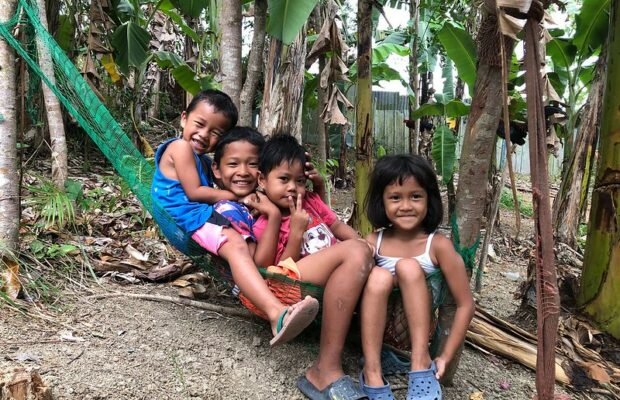
In the mountains of Cebu, child sponsorship has the power to send children to school safely and encourage them to chase their dreams.
Sponsored children: 0 of 13
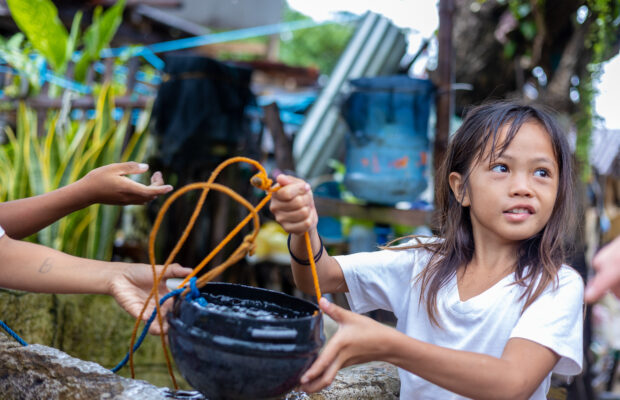
In the small town of Liboro, Philippines, sponsorship has the possibility of transforming the lives of young people by sending them to school.
Sponsored children: 11 of 13
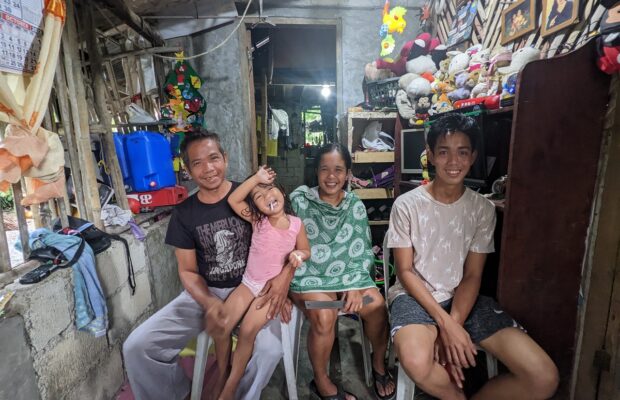
In this isolated region in the north of the country, it is difficult if not impossible for the poorest families to send their children […]
Sponsored children: 14 of 15

Urban poverty is appalling in the Philippines. Sponsor a child today and give them the chance to get out of poverty thanks to the […]
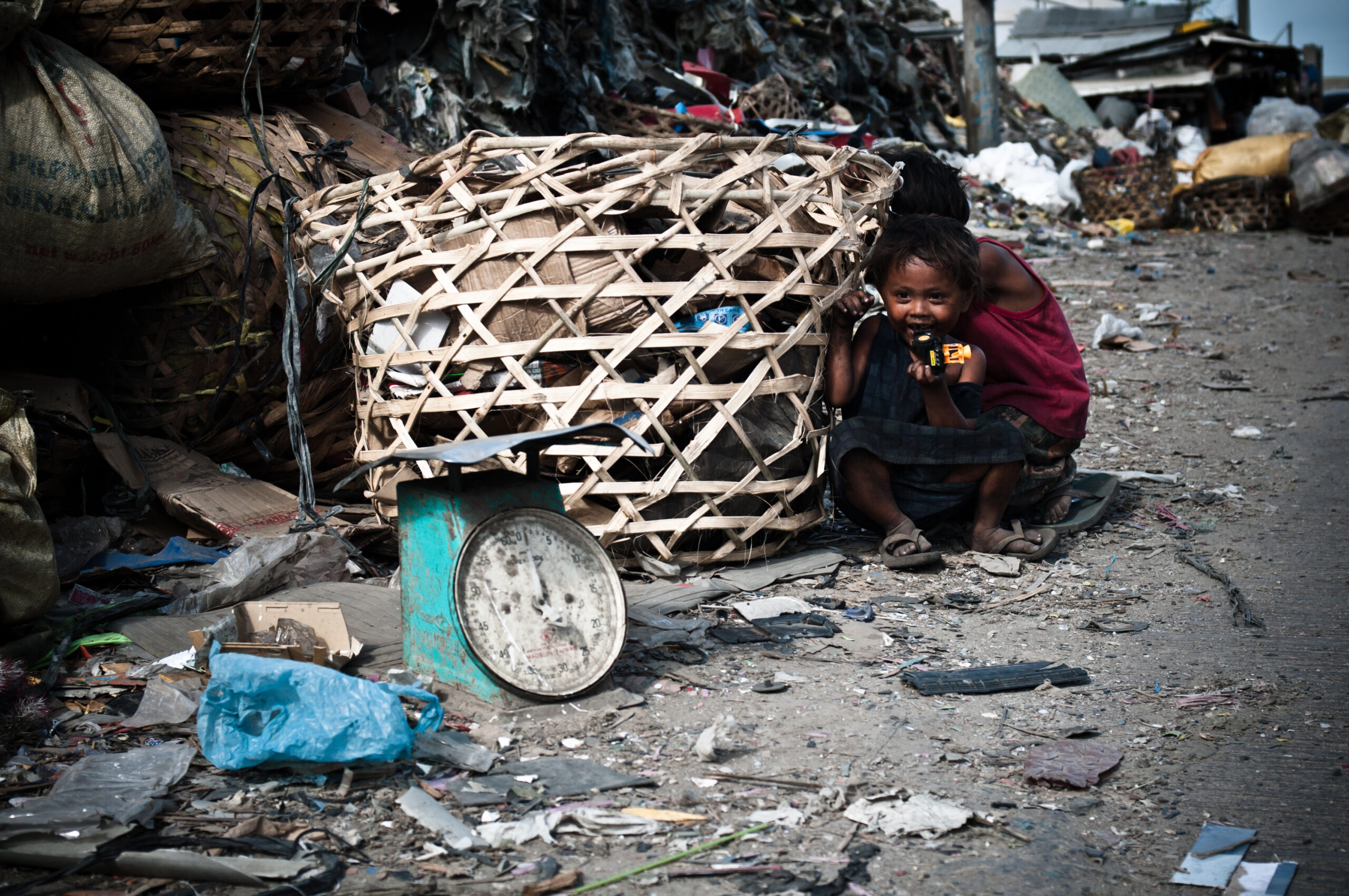
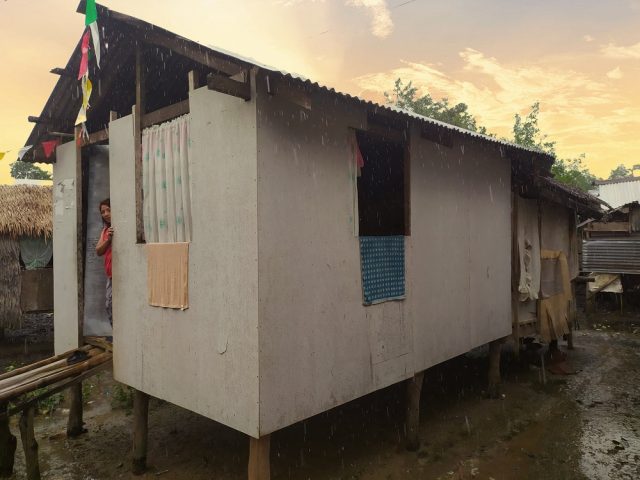
On the island of Samar and its neighbors in the east of the Philippines lives an ethnic minority, the Waray tribe. With their own […]